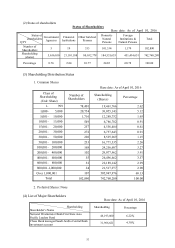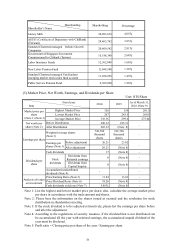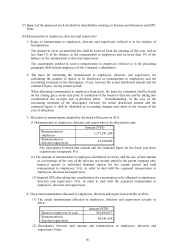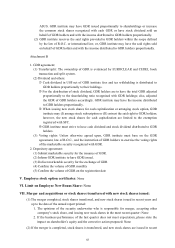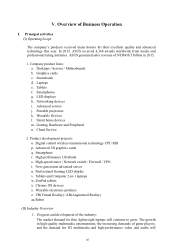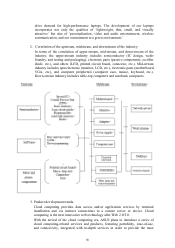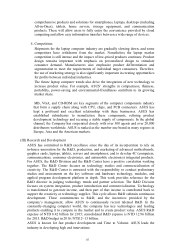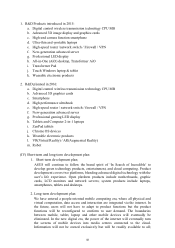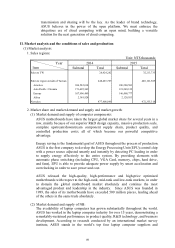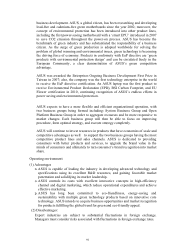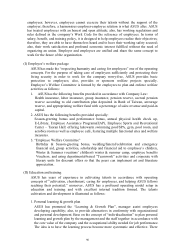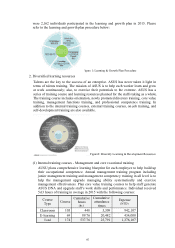Asus 2015 Annual Report Download - page 91
Download and view the complete annual report
Please find page 91 of the 2015 Asus annual report below. You can navigate through the pages in the report by either clicking on the pages listed below, or by using the keyword search tool below to find specific information within the annual report.87
comprehensive products and solutions for smartphones, laptops, desktops (including
All-in-Ones), tablets, home servers, storage equipment, and communication
products. These will allow users to fully enjoy the convenience provided by cloud
computing and allow easy information transfers between a wide range of devices.
4. Competition:
Shipments for the laptop computer industry are gradually slowing down, and some
competitors have withdrawn from the market. Nonetheless the laptop market
competition is still intense and the impact of low-priced products continues. Product
design remains important with emphasis on personalized design to stimulate
consumer demand. Manufacturers also emphasize product differentiation and
segmentation to meet the requirements of individual target consumers. Therefore,
the use of marketing strategy is also significantly important in creating opportunities
for profits between individual industries.
The future laptop computer trends also drive the integration of new technology to
increase product value. For example, ASUS’ strengths in compactness, thinness,
portability, power-saving and environmental-friendliness contribute to its growing
market share.
MB, VGA, and CD-ROM are key segments of the computer components industry
that form a supply chain along with CPU, chips, and PCB connectors. ASUS has
kept a profound and excellent relationship with these businesses. ASUS has
established subsidiaries to manufacture these components, refining product
development technology and securing a stable supply of components. In the global
channel, the Company has cooperated closely with over 300 agents and over 20,000
distributors worldwide. ASUS is ranked as the number one brand in many regions in
Europe, Asia and the American markets.
(III) Research and Development
ASUS has committed to R&D excellence since the day of its incorporation to rely on
in-house innovation for the R&D, production, and marketing of advanced motherboards,
graphics cards, laptops, tablets, servers and smartphones; and to develop 4C (computers,
communications, consumer electronics, and automobile electronics) integrated products.
For ASUS, the R&D Division and the R&D Center have a positive correlation working
together. The R&D Center focuses on technology studies and commercialization of
creativity. The R&D Center is entrusted with the responsibility to conduct preliminary
studies and assessments on the key software and hardware technology, modules, and
applied program development platform in depth. This work provides reference for the
R&D director in judging technology trends and partner selection. The R&D Division
focuses on system integration, product introduction and commercialization. Technology
is transformed to generate income, and then part of that income is contributed back to
support the creativity or technology supplier. This cycle allows R&D substain continuous
development. These commitments to R&D, and the incentives provided by the
company’s management, allow ASUS to continuously recruit talented R&D. In the
constantly-changing computer world, the company has key technologies and leading
products enabling it to compete in the market and to create product value. ASUS R&D
expense of NTD 8.42 billion for 2015; consolidated R&D expense is NTD 12.96 billion
for 2015. R&D budget in 2016: NT$12~13 billion.
ASUS is known for fast product development and Time to Volume. ASUS leads the
industry in developing high end innovations:


